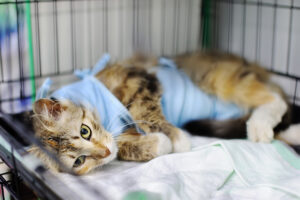
Let’s talk about common mistakes pet owners make after their furry companion undergoes surgery.
When your pet undergoes surgery—whether it’s a simple spay or a complex orthopedic procedure—the healing process that follows is just as important as the surgery itself. Even the most loving pet owners can unintentionally make mistakes that delay recovery or cause complications. Understanding what to avoid can make all the difference in helping your furry friend heal safely and comfortably.
Ignoring Post-Operative Instructions
One of the most common mistakes pet owners make after surgery is failing to follow their veterinarian’s post-operative instructions exactly. Every surgery and every pet is different. Your vet’s guidance on medications, feeding, exercise, and wound care is based on your pet’s unique needs.
How to avoid it: Ask questions before leaving the clinic. Write down or print out the care instructions, and set reminders for medication times. If you’re unsure about anything, call your vet—never guess.
Allowing Too Much Activity Too Soon
It’s natural to think that once your pet seems energetic again, they’re ready to resume normal play. Unfortunately, too much activity too soon can cause stitches to tear, swelling to worsen, or incisions to reopen.
How to avoid it: Follow your vet’s activity restrictions. Keep your pet leashed during bathroom breaks and use a crate or confined space indoors to limit jumping or running until your vet gives the green light.
Skipping the E-Collar or Protective Cone
Many pets dislike wearing the “cone of shame,” but it serves an essential purpose—preventing them from licking or biting the surgical site. Removing the cone early is one of the top reasons wounds become infected.
How to avoid it: Keep the e-collar or protective garment on until your veterinarian approves its removal. If your pet is truly uncomfortable, ask about soft or inflatable collar alternatives.
Neglecting Wound Monitoring and Cleaning
Even a small incision can quickly become infected if it’s not monitored and cleaned as directed. Redness, swelling, or discharge are signs that something may be wrong.
How to avoid it: Check the incision site daily. Follow your vet’s cleaning instructions precisely—usually with a vet-approved antiseptic or warm saline solution. Avoid using alcohol or hydrogen peroxide unless specifically directed, as they can damage healing tissue.
Forgetting to Administer Medications Properly
Pain medications and antibiotics are crucial for your pet’s recovery. Missing doses or stopping early can lead to infection, discomfort, or delayed healing.
How to avoid it: Use a medication chart or alarm reminders. Never give human pain relievers to your pet—many are toxic to animals. If you’re having trouble giving pills, ask your vet about alternative forms like liquid or chewable options.
Failing to Maintain a Comfortable, Clean Recovery Area
A clean, quiet environment helps your pet rest and reduces stress, which is vital for healing. Dirty bedding or high-traffic areas can expose your pet to bacteria or cause anxiety.
How to avoid it: Set up a cozy recovery area away from other pets and children. Use clean blankets and bedding, and keep food and water within easy reach.
Overlooking Subtle Signs of Pain or Complications
Animals instinctively hide pain, so you may not notice discomfort right away. Subtle changes like whining, restlessness, decreased appetite, or hiding can signal that something’s wrong.
How to avoid it: Monitor your pet’s behavior closely. If they seem unusually lethargic, stop eating, or the incision looks worse, contact your veterinarian immediately.
Missing Follow-Up Appointments
Some pet owners skip post-surgery checkups once their pet seems fine. However, follow-up visits allow the veterinarian to ensure proper healing, remove stitches, and detect any hidden issues early.
How to avoid it: Mark all follow-up appointments on your calendar before leaving the clinic. These visits are a crucial part of the recovery process.
Proper Aftercare Provides Better Healing
Surgery is only the first step in your pet’s healing journey. The care you provide afterward plays a major role in preventing setbacks and ensuring a full recovery. By avoiding these common mistakes pet owners make after surgery and following your veterinarian’s instructions carefully, you can help your pet return to health quickly and safely.
Trust Maryland Veterinary Surgical Services With Your Companion’s Health
Your companion’s health is important, and the team at MVSS is ready to provide the best care possible for your furry family. We are dedicated to combining comprehensive exams and assessments with informative and honest discussions of your companion’s care. Once we have worked with you to decide on the best course of action for your dog, our professionals will use their surgical expertise to work towards the goal of giving your companion an active and pain-free life. We are proud to serve loyal companions in Catonsville and Baltimore. To learn more about our services, give us a call at 410-788-4088 or visit us online. For more information and tips for dog health, follow us on Facebook and Pinterest.
